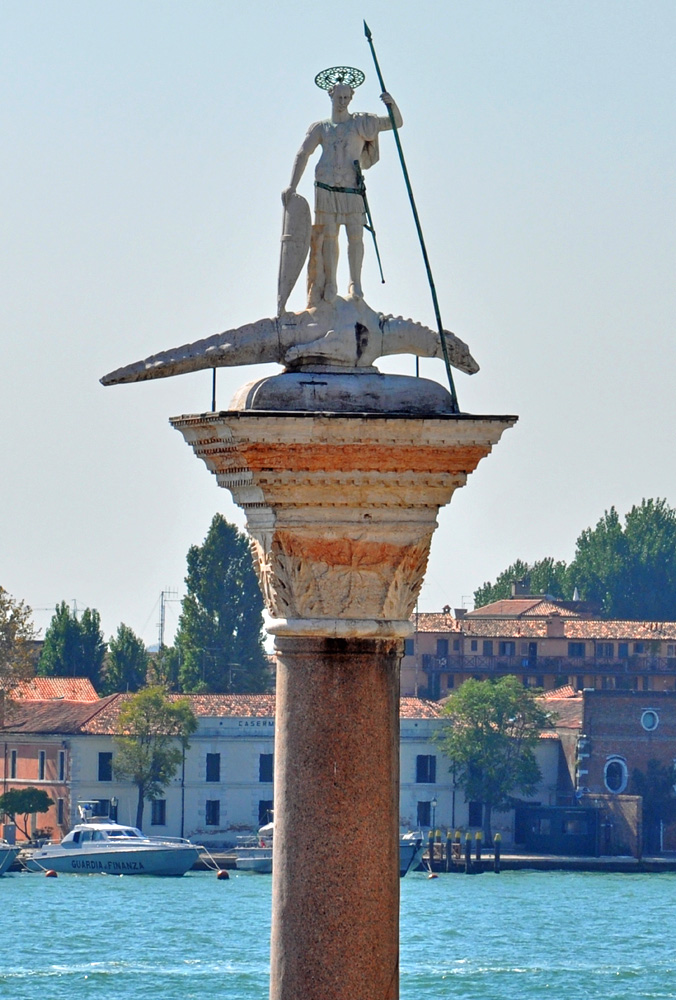The dragon story was added to lives of Theodore beginning in the 9th century. In it, the saint is sleeping in a grassy meadow not knowing that a fierce dragon lives nearby. A woman runs up and urges him to flee, but he just makes the sign of the cross and slays the beast with his sword.2
Prepared in 2015 by Richard Stracke, Emeritus Professor of English, Augusta University. Revised 2017-03-16.

Atop a pillar in St. Marks Square, Venice. (See description page.)

Cefalù, Cathedral of the Transfiguration, 12th century mosaic (See description page)
DATES
- Feast day: November 9
- Died in the 4th century
NAMES
- Sometimes called Theodore "Strateletes," a word that means "marshal" or "general"
BIOGRAPHY
- Golden Legend #165: html or pdf.
- Gregory of Nyssa, "A Homily on Theodore the Recruit," in Leemans, 82-91. (The Greek text of this is in the Acta Sanctorum article listed below, pages 27-29.)
- Acta Sanctorum, November vol. 4, 11-89.
- Roman Breviary (1632 Latin version), 1095.
NOTES
1 Weitzmann, Icon, 43, 56.
2 Acta Sanctorum, November vol. 4, 16-17 [in Latin] and 46-48, 50-51 [in Greek].
ALSO SEE